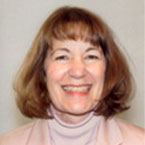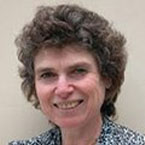By Sophie J. Balk, MD, FAAP & Ruth A. Etzel, MD, PhD, FAAP
Arts and craft projects can help children build motor skills, attention and self-esteem. They are also a fun and creative outlet for families looking for a break from tech and digital media. But how can parents know which art and craft materials are safe for children?
Here are some common questions we hear, and what parents should look for when shopping for art and craft supplies for their family:
Q: Are water-based art supplies always safe?
A: In general, water-based supplies are preferable because they do not contain chemical solvents. Unintentionally eating even small amounts of these solvents can be fatal.
Coloring agents used in paints and inks can contain potentially harmful substances such as toxic metals. Some water-based, cold-water dyes are chemicals that cause some people to develop allergic reactions after repeated exposures. Long-term health effects have not been thoroughly studied, so it's best to look for safer alternatives.
Because some water-based paints may contain
formaldehyde preservative, choose formaldehyde-free products. Water-based, unscented markers are a better choice than permanent or dry-erase markers. Make sure to avoid ingestion (such as licking paintbrushes).
Q: I heard on the news that some crayons may contain asbestos fibers. How can I make sure the crayons I buy do not have asbestos?
A: An Environmental Working Group (EWG) report revealed that 4 crayon brands tested in independent laboratories contained detectable levels of asbestos fibers. All 4 crayon types were made in China. The source of the asbestos contamination was from the use of talc, which is used as a binding agent in crayons.
The risk of significant exposure to asbestos fibers from typical use of these crayons is low. However, when purchasing crayons, make sure the label does not show talc in the ingredients. The label should also have a statement that the product complies with ASTM D4236 (a label created by the American Society for Testing and Materials), and the label has the seal of The Art and Creative Materials Institute. The EWG report was the third study in 15 years to document the presence of asbestos in children's products, highlighting the ongoing nature of the issue and need for reform on a federal level.
Q: I am a painter and work out of an art studio in my home. How can I protect my children from potentially harmful exposures from the paint and other materials I use?
A: Artists, such as painters, have unique job-related health concerns. They face potential exposures to a variety of toxic chemicals in art supplies, and unregulated settings where they often do their work (such as the home or studio). Artists may work in small and intensely contaminated home workspaces, leading to exposures for themselves and their families. Potential hazards in paints and related products include heavy metals (such as
lead, mercury or cadmium), solvents (such as xylene, toluene or benzene), and others (such as methylene chloride, acids or alkalis).
Children and family members should be kept out of home art studios and other locations where potentially hazardous materials are used, stored, or thrown away. Home art studios should follow basic principles of hygiene and safety. This includes selecting less toxic materials when possible, proper ventilation, use of protective gear, proper cleanup methods, and appropriate storage and disposal of materials. Before returning to other areas of the home, painters should wash their hands thoroughly and change their work clothing and shoes.
Agencies such as the U.S. Consumer Product Safety Commission offer more detailed safety guidance. The Arts, Crafts & Theatre Safety organization has a
hotline that provides advice on health and safety issues in the arts field.
Q: What are safe art materials to purchase for my children?
A: To ensure that an art material has been evaluated by a toxicologist (an expert in poisons and their effects) for safety, look for the statement: "conforms to ASTM [American Society for Testing and Materials] D4236." It should also have an Approved Product seal from The Art and Creative Materials Institute.
Although this label cannot guarantee complete safety of a material, products with this label are a better choice than those that carry the Cautionary Label (do not purchase art materials labeled "Keep Out of Reach of Children" or "Not for Use by Children," or that have the words "Poison," "Danger," "Warning," or "Caution," or that contain hazard warnings on the label). Avoid using donated or found materials unless they are in the original containers with full labeling.
Remember
Keep your family's arts and craft activities safe and fun. It's best to supervise children when they're using art materials. Remind them that safe cleanup, including handwashing (with soap and water), is important. When they've finished a project, make sure supplies they are properly labeled and stored. Then, enjoy their creations!
About the authors
 Ruth A. Etzel, MD, PhD, FAAP is an internationally recognized pediatrician, environmental epidemiologist, and preventive medicine specialist. She performed the first study to document that children with secondhand exposure to tobacco smoke had measurable exposure to nicotine. Her pioneering work led to nationwide efforts to reduce indoor exposure to tobacco, including the ban on smoking in US airliners. She also produced the first research to show that exposure to toxigenic molds in the home could be dangerous to infants' health. She served on the AAP Committee on Environmental Health from 1986 to 1995 and chaired it from 1995 to 1999. From 2009-2012 she led the World Health Organization's activities to protect children from environmental hazards. She is the co-editor of the Textbook of Children's Environmental Health. Ruth A. Etzel, MD, PhD, FAAP is an internationally recognized pediatrician, environmental epidemiologist, and preventive medicine specialist. She performed the first study to document that children with secondhand exposure to tobacco smoke had measurable exposure to nicotine. Her pioneering work led to nationwide efforts to reduce indoor exposure to tobacco, including the ban on smoking in US airliners. She also produced the first research to show that exposure to toxigenic molds in the home could be dangerous to infants' health. She served on the AAP Committee on Environmental Health from 1986 to 1995 and chaired it from 1995 to 1999. From 2009-2012 she led the World Health Organization's activities to protect children from environmental hazards. She is the co-editor of the Textbook of Children's Environmental Health.
|
 Sophie J. Balk, MD, FAAP, is a general pediatrician at the Children's Hospital at Montefiore and Professor of Pediatrics at the Albert Einstein College of Medicine in Bronx, NY. Her academic work focuses on educating clinicians about pediatric environmental health. She is a past member and chairperson of the AAP Council on Environmental Health, and a past member of the AAP Section on Tobacco Control Executive Committee. She has served as Associate Editor of the 4 editions of Pediatric Environmental Health. Dr. Balk has published and lectured on skin cancer prevention, tobacco issues, and other environmental health issues relevant to pediatric practice. Sophie J. Balk, MD, FAAP, is a general pediatrician at the Children's Hospital at Montefiore and Professor of Pediatrics at the Albert Einstein College of Medicine in Bronx, NY. Her academic work focuses on educating clinicians about pediatric environmental health. She is a past member and chairperson of the AAP Council on Environmental Health, and a past member of the AAP Section on Tobacco Control Executive Committee. She has served as Associate Editor of the 4 editions of Pediatric Environmental Health. Dr. Balk has published and lectured on skin cancer prevention, tobacco issues, and other environmental health issues relevant to pediatric practice. |